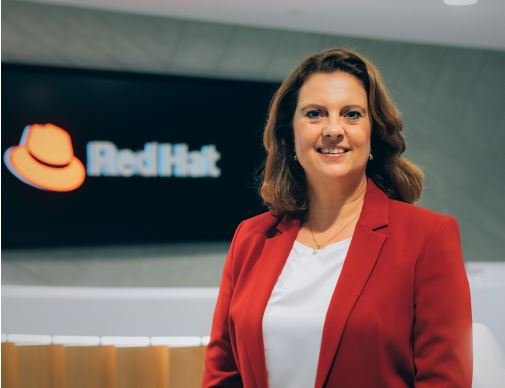Technology alone cannot deliver success in any digital transformation strategy, which must put equal emphasis on establishing the right culture and processes to avoid failure.
More importantly, organizations have to realize their digital transformation journey needs to be continuously assessed and finetuned. The adage that it is not a race, but a marathon, rings especially true here.
Technology always should be tapped and seamlessly integrated to transform business operations, but organizations also need to change the way they work. They have to tweak key processes to achieve higher efficiencies, as well as learn and adapt, according to Marjet Andriesse, Red Hat's Asia-Pacific vice president and general manager.
"It's all about change, transformation, and agility," Andriesse said. "The old days where you do things once and you're good to go for, maybe, a year are no longer true. Now, it's a continuous development and this asks a lot from everything--technology, process, and people all need to be in concert with each other. They need to be in sync, like an orchestra, where everything needs to work together."
Often, the need for changes in culture and processes is ignored or underappreciated in an organization's digital transformation strategy. The assumption is that as long as the right technology is implemented, such efforts will yield results.
Dismally, though, just 30% of digital transformation projects succeed in meeting their objectives.
Red Hat believes five key elements will help companies ensure their transformation can avoid failure: leadership, product, development, architecture, and operations.
A change in leadership, for instance, is necessary to support new ways of working and encourage a culture of experimentation, collaboration, and transparency. Employees need to know they can work within a safe environment that allows them to explore new ideas and, at the same time, fail without fearing punishment.
Organizations should look to reward behaviors that support a new culture--one that breaks down unnecessary barriers between departments and that fosters a non-blaming environment.
They also need to shift their focus on managing projects to products. This will ensure they build solutions that their customers actually need. It translates vision and strategy into actionable procedures, and creates hypotheses that can be quickly tested and tweaked.
"Fail fast and try again," Andriesse said, adding that enterprises should no longer indulge in three-year product lifecycles. "If the product doesn't do what the customer want, ditch it and try again."
This will require a company's development and operations (DevOps) team to be able to continuously test and improve on its products. Processes also should be in place to enable user feedback to be quickly channeled back to DevOps, so a viable product can be released swiftly into the market. New features should be deployed at the fastest pace possible.
The need for speed means organizations must have a robust architecture on which new features and products can be easily built and scaled. It will provide a stable technical foundation that balances the efficiencies brought about by standardization against customers' need for product customization.
When organizations focus on the five key elements, they then can better unwrap the benefits of digital transformation.
Andriesse said: "The right leadership enables the right employee behavior. The right development framework and architecture will enable you to build the right product, while the right operations will help optimize the right processes."
When done properly, digital transformation not only creates new possibilities and better ways of working, but also establishes more nimble business models.
Paving the way to successful transformation
Enterprises that work with Red Hat on their digital transformation have access to agile and flexible services, and a partner that understands open technologies. The vendor's consulting team uses collaborative service delivery to help businesses adopt new technologies, transform processes, and scale their IT strategy.
Having recently assumed her role as Asia-Pacific head, Andriesse herself is looking to drive Red Hat's continuous transformation as an organization that thrives on diversity and open culture. She took over the position from Dirk-Peter (DP) van Leeuwen, who had helped kickstart the vendor's operations in Asia-Pacific.
 Marjet Andriesse, Red Hat Asia-Pacific
Marjet Andriesse, Red Hat Asia-Pacific
Andriesse noted that Red Hat's vision of open hybrid cloud encompasses applications and data that can easily move across IT environments. It is built on an open source architecture that taps the continuous delivery of microservices to keep pace with rapidly changing customer requirements.
This emphasis on "customer centricity" is particularly critical in Asia-Pacific where each market has its own culture and unique requirements, with significant differences between established and emerging markets, she said.
It underscores the need for Red Hat to be agile in its go-to-market approach and tailor its solutions to the needs of organizations across the different markets.
"Flexibility will be important as employees return to the office in a hybrid work model and business leaders are compelled to transform their business," Andriesse noted. "They will need technology that is nimble, lean, and agile to cope with business disruptions. And these can be enabled with cloud technologies."
"We're not only open source in the technology, we also adopt an open philosophy that drives our culture and organization. It ensures we develop solutions that meet the needs and objectives of our customers in this region."
This article is also available in PDF format.
Digital transformation is not a product or a solution. It’s a continuous process involving new technologies and ways of working to compete successfully through continued innovation. It must encompass technology, culture, and processes—in concert with one another. No matter where your company is in the process, Red Hat can help you understand every facet of change and help you achieve your goals. Learn more at https://www.redhat.com/en/solutions/digital-transformation/




